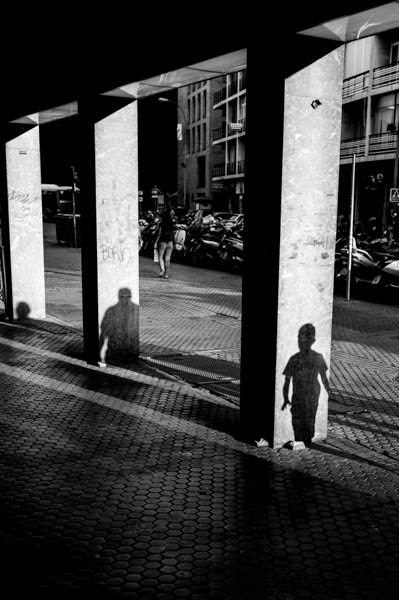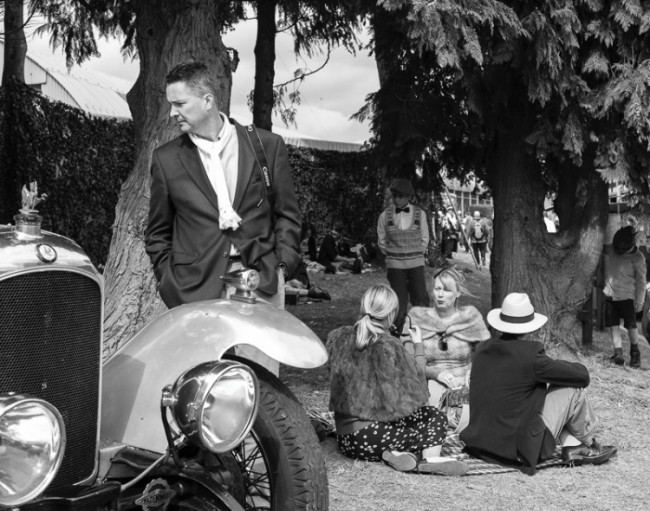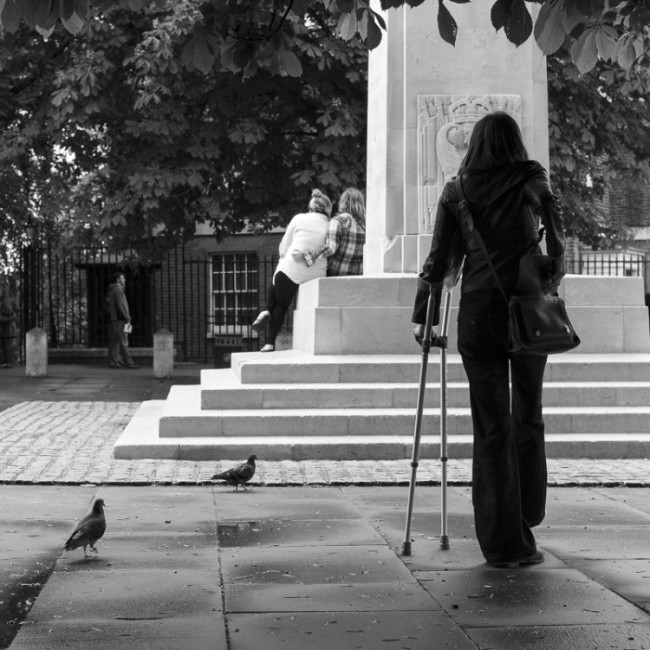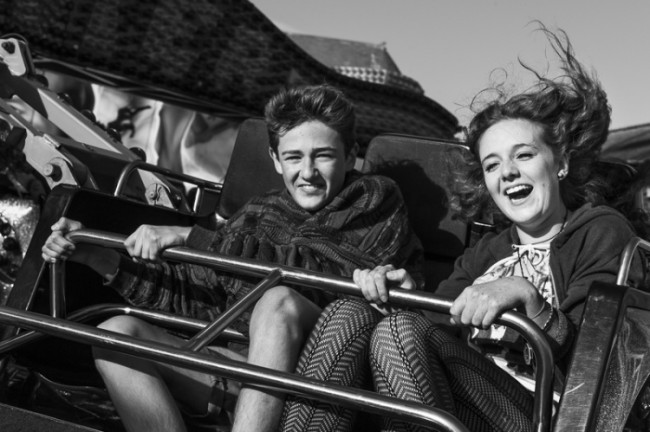ÔÇ£Pay attention to the frame.ÔÇØ I heard that phrase often sitting in various photo critiques. Valid advice, but it means little without an understanding of how to construct an image in the rectangular confines of the camera viewfinder.
Part intuition, part practice and a large part daring, making a composition interesting and successful is no easy task. One M Monochrom photographer I have recently come across composes an image in a way that is never static, boring, or formulaic, he is Michael J. Locke.
The image ÔÇ£Shadow ColumnsÔÇØ is loaded with contrast, has no one facing the camera, and the top and bottom are basically black triangles that consume half the photograph yet it is wonderful!
ÔÇ£Shadow ColumnsÔÇØ masterfully breaks every rule you will ever read in a ÔÇ£How to Take Great PhotosÔÇØ book. The image is dominated by large dark areas, mostly absent of detail, yet the strong contrast is not distracting but gives us a sense of foreboding and mystery. The shadow areas on the top and the bottom of the image make a frame within a frame focusing us on the subject of the image, the cast shadows of the people walking down the street.
The shadows of the three figures add movement and a dynamic tension. Like the ages of man they appear to pursue the female form in the center of the frame. Those shadows echo the strong diagonal but stop when they collide with the lit columns. The length of the shadows and the gesture of the figures that create them imply a sense of urgency and quickness.
In the middle ground and background the texture of the motorbikes, garbage and graffiti all give the image an interesting grit. The viewerÔÇÖs eye moves around the image but returns to the sharp shadow of the boy on the first column. Holding the viewer in the frame are the many diagonals created by the pavement stones moving at a 90 degree angle to the direction of the shadows. The composition succeeds because it keeps the viewer in the frame while still allowing the graphic elements of shape, pattern and texture to delight the eye and tell a story.
Locke has made something fascinating, ominous, and prurient out of a scene that most photographers would have walked by. With this photo Locke has told us a little bit about his impression of this point in time and that makes this image more than a mere document of a street in the late afternoon.
ÔÇ£Shadow ColumnsÔÇØ is not just about a place or thing, it is about emotion and feeling that happens in a split second. You turn a corner and you instinctively feel a premonition and then as quickly those feelings come they disappear, that transient second that holds so much meaning.
I have placed the designation of ÔÇ£how-toÔÇØ on this post because many of us could learn a thing or two from the images here. I am also including a few more of MichaelÔÇÖs images and a link to MichaelÔÇÖs web page and gallery at the end of the post.
Michael J. Locke Photography Website
Michael J. Locke Represented by the Stephen Bartels Gallery



